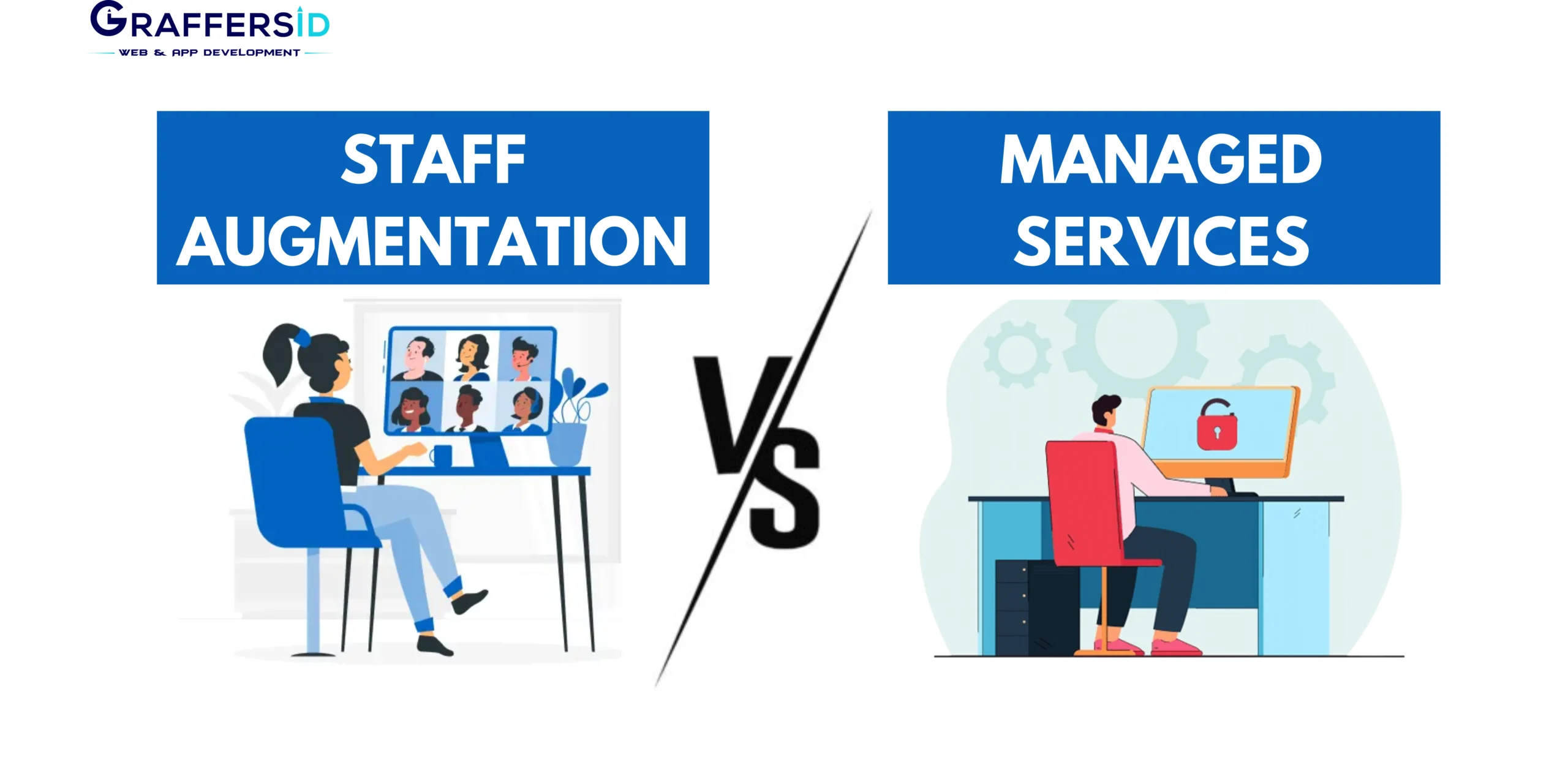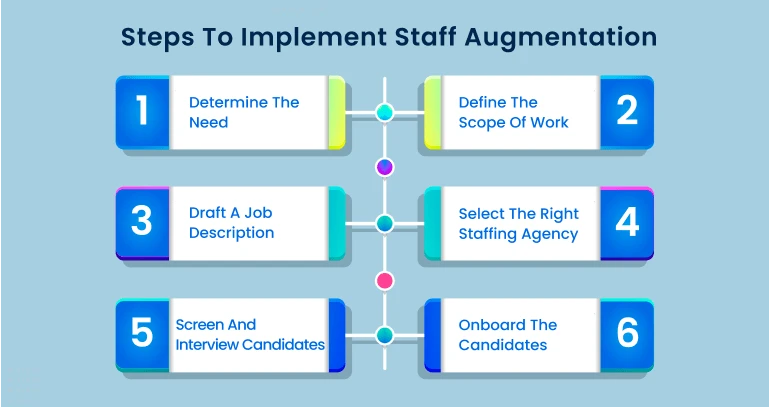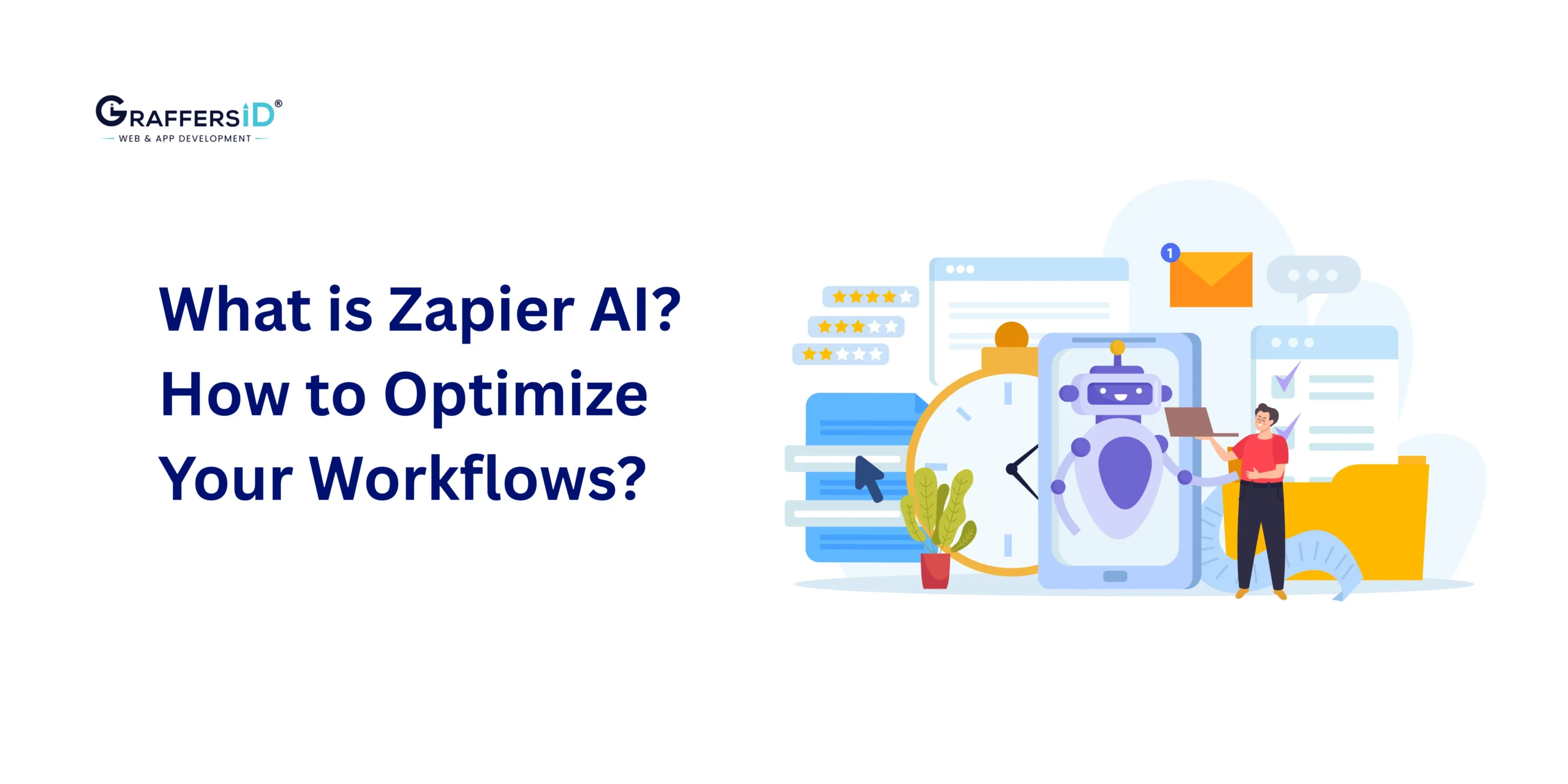In staff augmentation, IT projects are outsourced, and you get more authority over the model and can decide what to do and how to do it. While under managed services, there’s far less control over the process. You can concentrate on your business operations while knowing that the provider is handling the IT services you require. The provider has to ensure that the service meets the bar and expectations.
This article provides an in-depth comparison between staff augmentation vs managed services.
What do you understand about staff augmentation?
Staff augmentation comes under the ambit of the software development outsourcing model. The reason behind the implementation of staff augmentation by most companies is to assist the team and to provide specialists or expertise for a short span of time. There’s no addition of HR.
It is critical in this case to focus on providing input and effort without making any promises about the outcome.
Advantages of Staff Augmentation
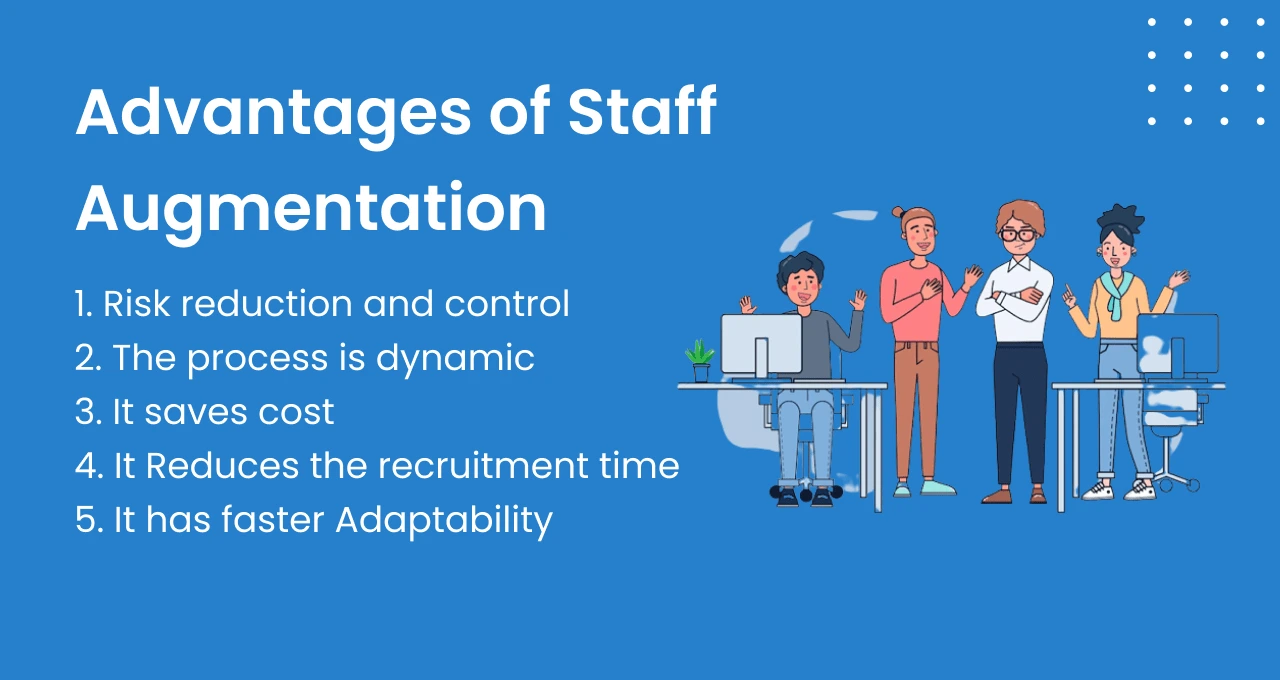
1. Risk reduction and control
The best part about staff augmentation is that it gives indefinite control over the project while ensuring that complete monitoring and assessment are done throughout the process. The team project manager will focus on work to ensure the high-quality delivery of the project.
However, when you outsource, you give the entire authority of the project to the third party while losing control over it, while in staff augmentation, you have the in-house team to assess the project throughout while ensuring that it meets the required standards.
2. The process is dynamic
When you gauge the project throughout, the chances get higher of identifying the missing skills and capabilities in employees and being able to quickly hire dedicated developers where there’s a shortage. It is entirely up to you who you want to hire and how long you want to hire for.
3. It saves cost
If you want to increase the size of the team and at the same time don’t want to hire additional permanent employees, you don’t have to hire and pay full wages to the employees. Instead, with staff augmentation, you can get the full assistance of skilled experts who can fit into the size of your team.
Want to know the cost of hiring app developers
4. It Reduces the recruitment time
In staff augmentation, the process of hiring goes to the service provider, which ends up cutting costs and time on recruitment.
5. It has faster Adaptability
You can rapidly hire fresh talent and expertise in a short span of time and can even scale up or down the tram based on your requirements. This helps in adapting with trends faster.
Disadvantages of Staff Augmentation
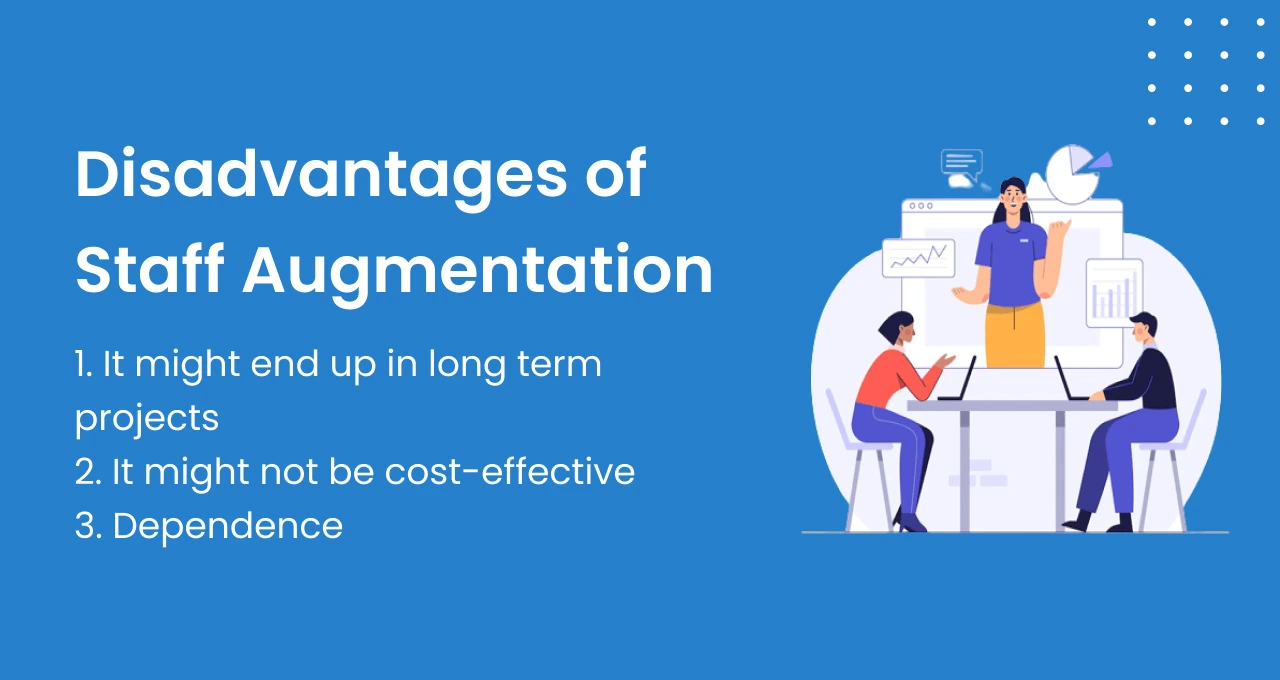
1. It might end up in long-term projects
In long-term projects, the staff augmentation model may be tested. In long-term projects, staff augmentation might not work well as the employees might have to take on additional responsibilities.
2. It might not be cost-effective
In a long-term project, staff augmentation might end up costing you more in hiring employees. Although it depends on your capacity to hire and retain employees, generally it might increase the cost.
Know about the cost of hiring a WordPress Developer
3. Dependence
When you choose staff augmentation services, there is increased dependency on the service provider as a third-party is providing you with external talent. So, you might not be able to deploy your project in your decided timeline.
What do you understand about managed IT Services?
Managed IT services entail outsourcing management and supporting your company to improve operational efficiency. The managed service provider is hired as a full-time employee.
These companies have assembled a skilled team of specialists to relieve the technological burden of a diverse customer base, allowing them to focus solely on their core business and avoid the time-consuming effort of acquiring and retaining in-house employees.
Advantages of Managed IT Service
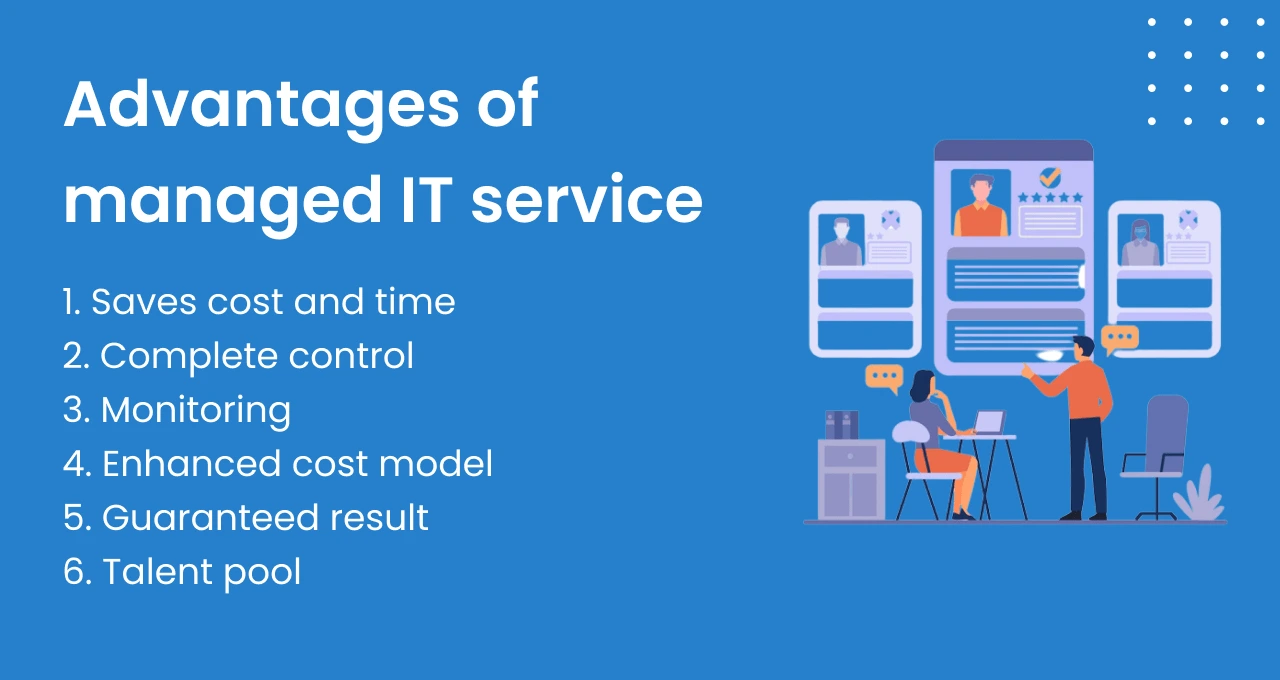
1. Saves cost and time
You can use the managed services model to hire a full team of competent and experienced experts who are equipped with the necessary technology and resources to work on your project.
You save time, money, and effort by obtaining what you need in this manner. Their services are fixed at price and vary depending on the amount of work completed.
2. Complete control
The service provider is in charge of the project from start to finish. However, choosing an experienced and reputable firm with a track record of delivering high-quality goods and superior results is critical.
Learn about How To Find/ Hire A Developer For Your Startup
3. Monitoring
Throughout the project, the provider monitors all processes and ensures that all necessary tools and resources are available. The vendor is in charge of the project’s outcome. MS organization evaluates all risks and creates an appropriate project plan.
4. Enhanced cost model
Because managed IT service providers charge based on results, if your demand for a particular service rises or falls, the price will adjust accordingly.
5. Guaranteed result
A service level agreement (SLA) defines the scope and duration of each project and is used to support managed IT services. Managed service providers will go to great lengths to keep promises to be compensated and increase the value of their job.
6. Talent pool
Because MSPs(Managed Service Providers) are usually larger than staffing firms, they may be able to provide a broader range of skills, knowledge, and solutions to meet changing client demands.
Disadvantages of managed IT service
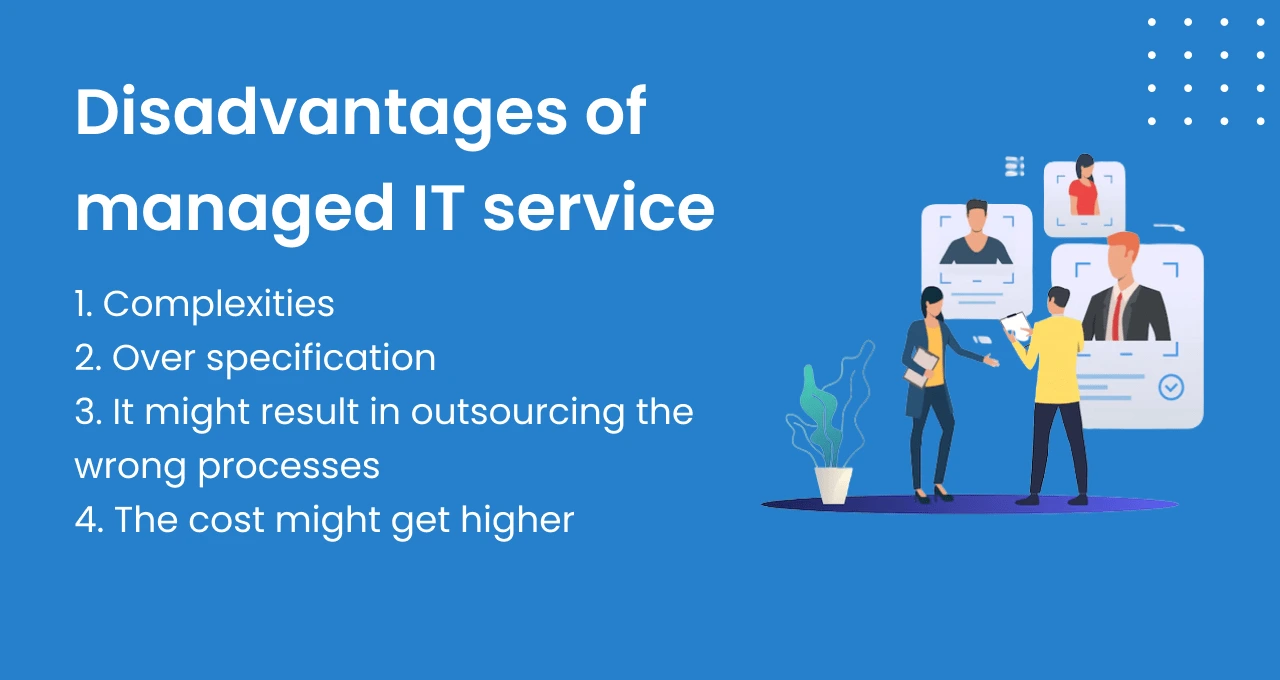
1. Complexities
Defining irrational services increases complexity. Outsourcing short-term initiatives may have more disadvantages than hiring more employees. You might not be able to properly communicate your project vision, which will compromise the quality of the project.
2. Over specification
Excessive specification of how a service should be performed frequently leads to the service provider performing less than optimally. If you start to overexplain the project outline, the outcome may not match your expectations.
3. It might result in outsourcing the wrong processes
Processes that necessitate a high level of expertise and are unique to the client organization may not be suitable for managed services, or even outsourcing in general. Provider lock-in can occur as a result of knowledge loss.
4. The cost might get higher
The cost highly depends on the amount of risk the managerial service company is undertaking. This also includes skill leveling, technical equipment, and other factors adding up to the cost and making it expensive.
Staff Augmentation Vs Managed Services
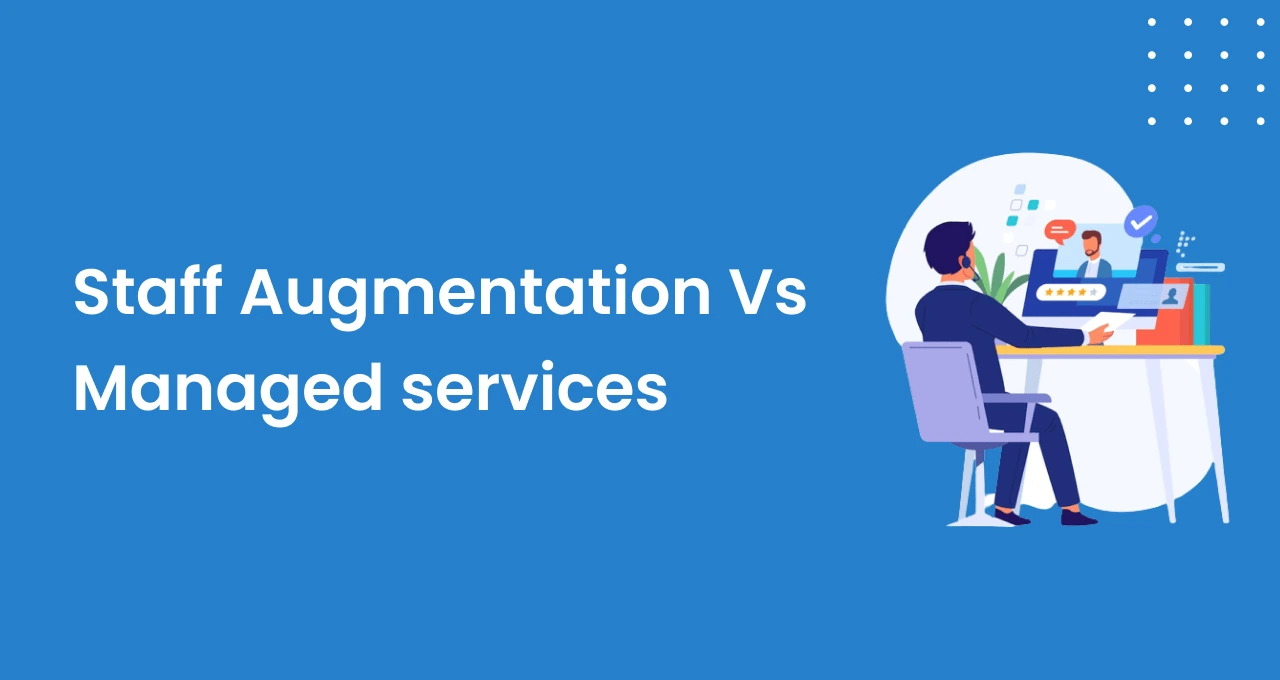
The terms “managed IT services” and “IT project outsourcing” are frequently used interchangeably. However, there is a fine line between the models.
When a company focuses on a single core activity rather than being disintegrated into a plethora of different diverse processes, the project outsourcing model works well.
To put it all together, a project can be considered in two aspects: one in which the customer gets along with the in-house team to work on the main tasks, and in the other aspect, the outsourcer manages the least important or secondary tasks.
Non-essential processes outsourced to a third-party provider may, however, significantly outnumber core aspects in volume. However, because the customer has overall control over the project, both the customer and the outsourcer must have effective communication.
The project outsourcing model, like staff augmentation, is typically used for some temporary assignments or tasks.
There are strong distinctions between staff augmentation and managed IT services.
Organizations looking to strengthen their IT departments should examine the differences and choose the model that best fits their needs.
In a nutshell, you can consider these factors based on the below parameters:
- Temporal factor
Staff augmentation is appropriate for a short-term project with a set deadline. In general, managed IT services are not constrained by the duration of a specific project. - Pricing model
In staff augmentation, the pricing is done on an hourly basis, while in managed IT services, the pricing is done more tediously based on the services. - Control and responsibilities
In staff augmentation, businesses get complete control over operations and staff hiring while bearing no responsibility for the project’s final result.
Staff Augmentation vs Managed Services: Which should you choose?
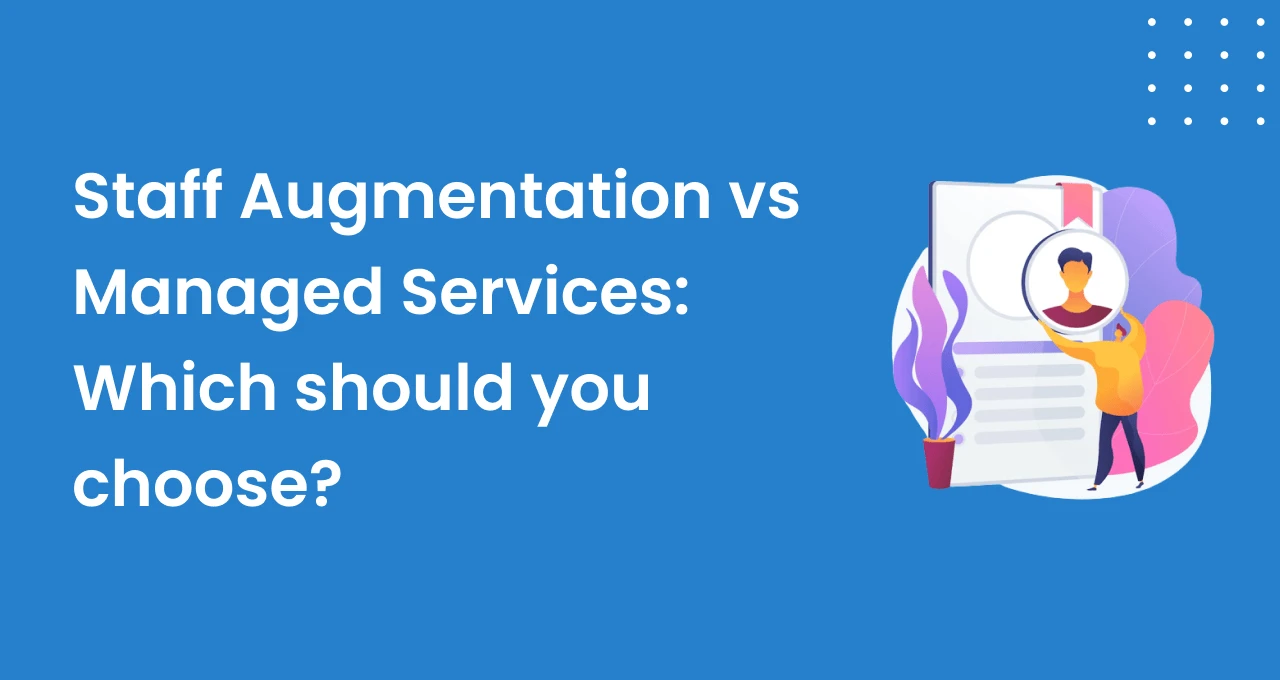
You should use staff augmentation if you’re working on a live or new project. With staff augmentation, you can easily enable or disable specialists. If you believe that you don’t need a specialist, then you can take the help of a vendor company.
Furthermore, with staff augmentation, you can easily take control of internal and external processes in the software development stages. It’s your call to decide what to do and how to execute it.
Staff augmentation brings more responsibility to the client company. It becomes crucial to ensure that you don’t have any communication gaps and that you choose the right team members.
While choosing the team, make sure you set a high bar for qualifications and skills. Adhere to hiring the right team with experience, qualifications, and skills, and you won’t end up regretting it.
On the contrary, you should go ahead with managed services if you don’t have a skilled team and are already juggling routine management. You should consider finding a talented vendor who can take up the responsibility.
Make sure you do extensive research about the vendor company and anticipate all the possible risks of delegating the responsibility. After a thorough analysis, delegate the entire responsibility to the vendor company.
However, managed services bring more cost and risk. You have to be aware of the risks that it can bring throughout the process and be ready to pay an extra cost.
How to find the right contractor?
Finding the ideal contractor is the primary goal of any business, regardless of whether it uses the managed services or staff augmentation model.
However, before going ahead with either of the models, make sure you have a predefined budget, requirements, and goals. Consider choosing a contractor that shares the same business goals and ideas or can understand the company’s goals and budget to connect with them on a long-term partnership.
Consider searching for a vendor who can bring new ideas to the table and teach new technologies to the team. This way, the team will imbibe all the necessary wisdom about technologies, which can open a room to new possibilities and opportunities.
In addition, don’t overlook the quality of the vendor. Find a reliable vendor company to ensure that you have a long-term partnership and can trust the company indefinitely.
Be it managed services or staff augmentation, search for a company that has made a good reputation in the market and is quite renowned for its work and services. Also, the company should be able to decipher the client company’s goals and vision to work more efficiently together.
Tips to choose contractors:
- Conduct thorough research on the vendor companies to get a glimpse of their experiences in the domain and with which industries they have worked.
- In addition, make sure you go through the ratings on reliable platforms such as Upwork or Clutch to see their professional experience and their reputation in the market.
- Once you shortlist all the vendor companies, make sure you prepare well-researched questions and conduct the interview to get to know them.
- While conducting the interview, engage in a meaningful and constructive discussion with them. Interviews can reveal a lot about their previous experiences and clients. Make sure you emphasize communication more to get a better understanding of their vision and goals.
- Once you see similar perspectives and goals coming up, boom, you’ve found the best vendor company to delegate to.
It doesn’t matter which model you choose, the end goal of every company is to increase revenue. However, considering profit in the first place isn’t worth it. You do have to consider the projects along with making profits.
Conclusion
Undeniably, both staff augmentation and managed services add valuable resources to the company to achieve results. However, it entirely depends on the project requirements and budget to decide which model will work the best. Each model comes with its own added benefits and drawbacks. Hence, it becomes extremely important to know the differences and then decide which model should be selected.
It can be difficult to determine which outstaffing model is required at times. Both models depend on the company’s priorities, requirements, projects, and budget. If you’re stuck with both, the best option is to hire a professional service provider who’s well-versed with both models.
If you’re looking for these services, GraffersID, a multi-award-winning IT Staff augmentation company will be a perfect fit. We offer top-notch vetted developers who can entirely transform your company’s ideas into amazing software and high-functioning applications and will deliver the best products for your company.
